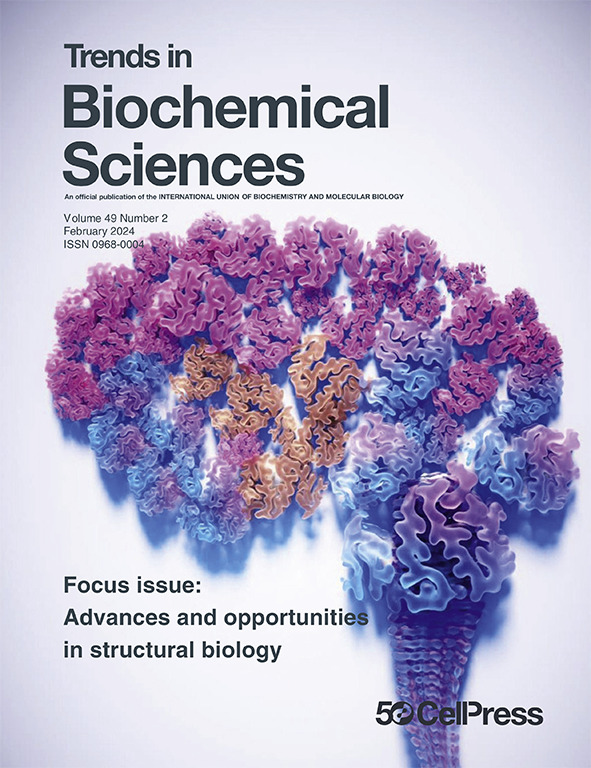PTMs作为分子编码器:在疾病网络控制中将伴侣重编程为表表观体。
IF 11
1区 生物学
Q1 BIOCHEMISTRY & MOLECULAR BIOLOGY
引用次数: 0
摘要
最近的研究发现表明,翻译后修饰(ptm)不仅能调节蛋白质活性,还能编码将伴侣蛋白转化为表表观体的构象状态:即重新连接蛋白质-蛋白质相互作用网络的多聚支架。这种新兴的范式扩展了疾病中伴侣生物学的框架,并为癌症和阿尔茨海默病等疾病的系统水平功能障碍提供了结构基础。这篇综述探讨了内在紊乱区域内的PTMs如何驱动表表观素的形成,这些支架如何选择性地调节使病功能,以及为什么它们的破坏使病理网络正常化。通过强调ptm作为超分子组装的分子编码器,我们提出了一种从靶向蛋白质到靶向维持和延续疾病的网络结构的转变——这一概念对细胞生物学、疾病传播和治疗设计具有广泛的意义。本文章由计算机程序翻译,如有差异,请以英文原文为准。
PTMs as molecular encoders: reprogramming chaperones into epichaperomes for network control in disease
Recent discoveries reveal that post-translational modifications (PTMs) do more than regulate protein activity – they encode conformational states that transform chaperones into epichaperomes: multimeric scaffolds that rewire protein–protein interaction networks. This emerging paradigm expands the framework of chaperone biology in disease and provides a structural basis for systems-level dysfunction in disorders such as cancer and Alzheimer’s disease. This review explores how PTMs within intrinsically disordered regions drive epichaperome formation, how these scaffolds selectively regulate disease-enabling functions, and why their disruption normalizes pathological networks. By highlighting PTMs as molecular encoders of supramolecular assemblies, we propose a shift from targeting proteins to targeting network architectures that sustain and perpetuate disease – a concept with broad implications for cell biology, disease propagation, and therapeutic design.
求助全文
通过发布文献求助,成功后即可免费获取论文全文。
去求助
来源期刊

Trends in Biochemical Sciences
生物-生化与分子生物学
CiteScore
22.90
自引率
0.70%
发文量
148
审稿时长
6-12 weeks
期刊介绍:
For over 40 years, Trends in Biochemical Sciences (TIBS) has been a leading publication keeping readers informed about recent advances in all areas of biochemistry and molecular biology. Through monthly, peer-reviewed issues, TIBS covers a wide range of topics, from traditional subjects like protein structure and function to emerging areas in signaling and metabolism. Articles are curated by the Editor and authored by top researchers in their fields, with a focus on moving beyond simple literature summaries to providing novel insights and perspectives. Each issue primarily features concise and timely Reviews and Opinions, supplemented by shorter articles including Spotlights, Forums, and Technology of the Month, as well as impactful pieces like Science & Society and Scientific Life articles.
 求助内容:
求助内容: 应助结果提醒方式:
应助结果提醒方式:


